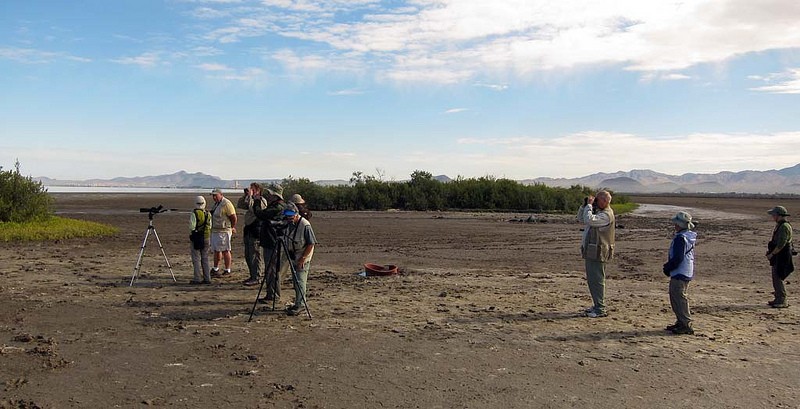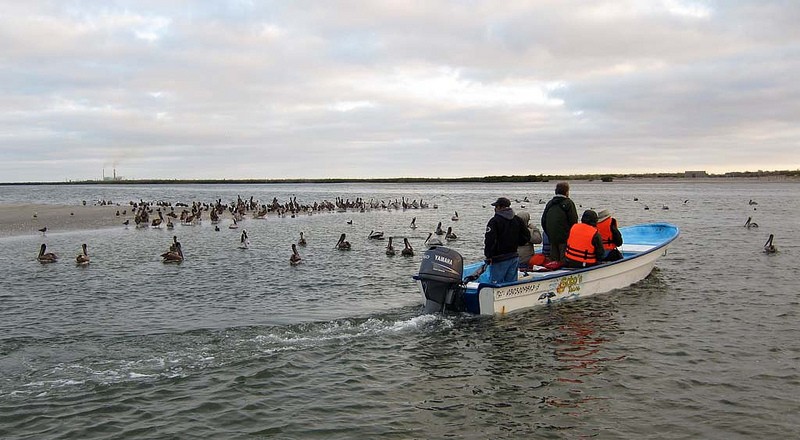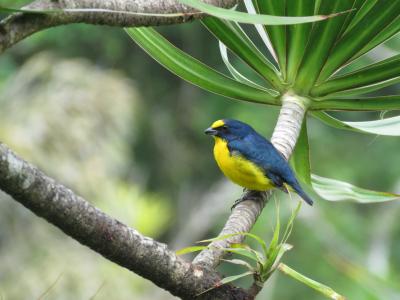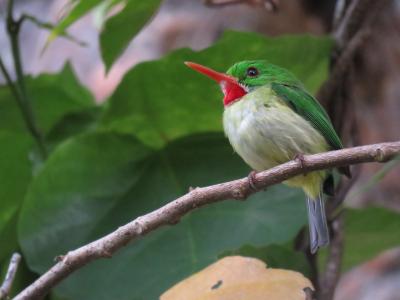Day 1: The tour begins this evening at 6:00 pm in the lobby of our hotel in San José del Cabo, Mexico.
Day 2: We’ll bird the estuary of San José where a shallow, meandering freshwater creek meets the sea in an ever-changing delta only a few hundred yards across. In a region beset by an often very extended dry season, the creek is a veritable oasis. Being so close to human population always results in unanticipated changes in the nature of the marsh vegetation, but there are almost always a few Belding’s Yellowthroats in the stands of giant bullrush and cattails, and sometimes they can be abundant. The shallows also host numbers of ducks such as Cinnamon and Blue-winged Teal, several herons and egrets, including Reddish Egret, Common Gallinules, and Pied-billed Grebes. A look towards the ocean is worthwhile, usually resulting in Magnificent Frigatebirds and Brown Pelicans, and Heermann’s Gull is usually present. Later we’ll visit nearby desert, home to California Scrub-Jays, Blue-gray Gnatcatchers, Verdin and possibly Gray Thrasher. We’ll spend the rest of the day checking areas with larger trees in search of migrants of many species and where we’ll likely get our first views of Xantus’s Hummingbird. Night in Los Barriles.
Day 3: We’ll depart very early for the northern foothills of the Sierra Laguna. Here a road reaches about 2500 feet elevation and we’ll search for several endemic forms (many likely true species) that prefer the oak woodlands and even some that occasionally descend from the higher elevation pine-oak woodlands. Among the birds we should see are California Towhee, the pale “San Lucas” American Robin, the dark-eyed “Narrow-fronted” Acorn Woodpecker, the “Viosca’s” Band-tailed Pigeon without a tail band, and the not-so-different Warbling Vireo. If we’re very lucky, we could see the endemic subspecies of White-breasted Nuthatch, Oak Titmouse, Spotted Towhee, but one that is most likely is the relatively common “Cape” Northern Pygmy-Owl, with its slightly higher-pitched and faster-paced song. Wintering Cassin’s Kingbird also occur here, and the woodland is home to many wintering passerines such as a few Black-and-white and abundant Black-throated Gray Warblers. If the weather is sunny, this is also a good place to spot the highly colorful San Lucan Rock Lizard and the endemic Cape Spiny Lizard. We’ll return after lunch to our hotel and spend some time watching the sea and beach which might host Brown Booby and the ever-present Magnificent Frigatebirds. Night in Los Barriles.
Day 4: We’ll have a relaxed morning in the deserts and estuaries on the Gulf of California coast. The desert here has abundant Bursera microphylla trees which provide food for wintering Gray Vireos and Ash-throated Flycatchers, while the resident California Quail, Greater Roadrunner, Costa’s Hummingbird, Loggerhead Shrike, Cactus Wren, California Gnatcatcher, and Black-throated Sparrow are possible. Almost anywhere we might stumble into flocks of wintering Brewer’s and Clay-colored Sparrows, and some years Lark Buntings are numerous. After lunch we’ll continue with a birding stop or two to our next hotel on the charming waterfront in La Paz and will have the rest of the afternoon off. Night in La Paz.
Day 5: We’ll spend a very full but slow-paced morning in the La Paz area, which includes some of the best shorebird mudflats in western Mexico. Numbers of Least and Western Sandpipers, Willets, Long-billed Curlews, Marbled Godwits, Wilson’s, Black-bellied and Semipalmated Plovers winter here, and a full complement of herons and egrets are possible. Nearby are the sewage ponds and well-watered agricultural fields where Black-bellied Whistling-Duck, Crested Caracara, American Avocet, Black-necked Stilt, Vermilion Flycatcher and American Pipit are among many birds that will keep us busy for the rest of the day. As a result of this abundance, Peregrine Falcon and Merlin consider this a great place to spend the winter. This area is also notable for the list of vagrants that have been discovered here, and we’ll make an attempt to see any that have been reported, or perhaps we’ll find our own. We’ll have a break after lunch during which birders might spot a Blue-footed Booby patrolling the harbor waters across the street from our hotel while a stroll in the shopping district may be on the agenda for some, followed by an optional late afternoon outing to the nearby mudflats, mangroves, or a return to the sewage ponds. Night in La Paz.
Day 6: We’ll have the first part of this day to bird once more the areas near La Paz, venturing a bit farther afield to areas north of town where a giant cactus grove is home to both Gila Woodpecker and Gilded Flicker. North of there, the rocky shore should have American Oystercatcher, Yellow-footed Gull, and Brandt’s Cormorant while patches of mangrove might harbor Ridgeway’s Rail, the lovely Mangrove Yellow Warbler, and Northern Waterthrush. The nearby dwarf desert with fascinating plant forms will draw our attention, and Tiger Whiptails and Zebra-tailed Lizards will tease us as they dart away. If there are any flowers, some interesting butterflies such as Mexican Giant and Hepburn’s Metalmarks and the snazzy Silver-banded Hairstreak could occur. We’ll depart right after lunch to make the three and one-half hour drive to Puerto San Carlos, a fishing village on Magdalena Bay. Night in Puerto San Carlos.
Day 7: This morning we’ll take a four-hour boat trip on the bay during which we may get extremely close to Gray Whales, an experience not soon forgotten. It’s about an hour’s boat ride to the mouth of the bay where the whales tend to congregate as they arrive from their summer feeding and gestation areas as far north as the Chukchi and Beaufort seas. Sometimes loafing, sometimes in active courtship and mating, they often approach the boats out of curiosity. Plenty of birds also will be seen along the way with Royal Terns, Brandt’s Cormorants, Western Gulls, and Brown Pelicans in amazing abundance. After the boat ride and perhaps some mangrove birding, we’ll make the long drive back south, ending the day in the lush oasis of Todos Santos on the west side of the peninsula. Night in Todos Santos.
Day 8: We’ll have an easy day of birding near Todos Santos today. Palm oases, hedgerows, parks and agricultural fields can hold concentrations of wintering birds, such as warblers, sparrows, buntings, and orioles, and in the process we might discover a fun vagrant. We’ll also be back in the range of Xantus’s Hummingbird and Belding’s Yellowthroat, so we might have a chance to reacquaint ourselves with these endemics. Night in Todos Santos.
Day 9: We’ll have a very relaxed final morning, with some birding within walking distance of our hotel, such as at the nearby beach, where we often see Humpback Whales breaching in the distance. In late morning we’ll make the 80-minute drive to the Los Cabos airport where the tour ends around noon in time for your mid-afternoon international departure.
Last updated Nov 18, 2022



































